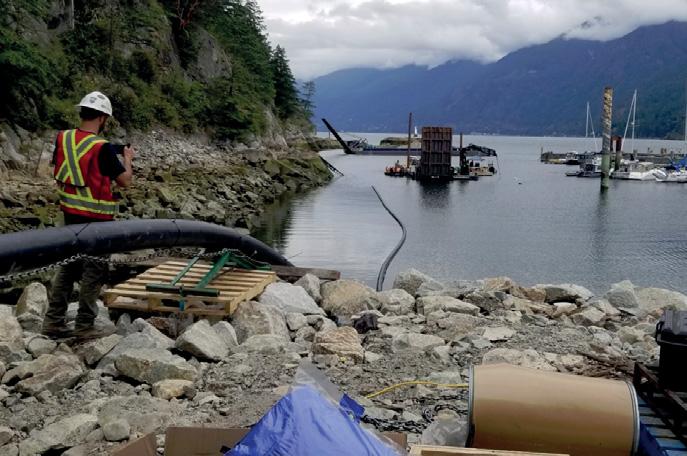
10 minute read
Ocean Loop
A high-tech, ocean front residential development has required the installation of a bespoke subsea heat exchanger system.
This project has seen Briggs, a UK provider of marine and environmental services bring together its range and expertise, while showcasing its green credentials.
The heat exchange project, at Horseshoe Bay, West Vancouver, British Columbia was designed by Canadian company Creative Energy, a leader in innovative district energy solutions. An “Ocean Loop” solution uses the steady ocean temperature at depth to regulate the temperature of the development thus making it more economical to heat and cool.
“This is a highly unique, cost effective and environmentally friendly way of heating and cooling the development,” says Alex Sevensma, VP of Operations at Foreshore Technologies, part of the Briggs group of companies. “It is a bespoke solution for Horseshoe Bay, but we believe that our intelligence from this project will ensure that we are in a position to undertake many similar projects in the future.”
In addition to Creative Energy and Foreshore Technologies’ work, diversified marine contractors Ocean Tech (Marine Engineering) and Balanced Environmental (permit and licence specialists), both Briggs companies, played significant roles in the project. This included installation of the system and associated subsea pipe infrastructure as it enters the building.
“This is a significant, ground-breaking project for Briggs,” says Craig English, Director of Subsea & Environmental Services at Briggs. “It is the first such installation of an Ocean Loop system in British Columbia, and we believe that it will pave the way for many more, not just in BC but potentially around the world.
“Horseshoe Bay truly highlights our collaborative nature, and most importantly our unrelenting drive to net zero. The use of the Ocean Loop, however, demonstrates just one element of Briggs’ commitments to renewable energy and along with our expertise and knowledge in subsea power cables, we are confident that we can successfully bring our knowledge into more domestic areas, as well as the commercial arena.”
Environmentally sound economical temperature control systems such as Ocean Loop are ideal for British Columbia, particularly with its 25,000 kilometres long coastline, much of which is remote from traditional and mobile energy networks.
8 Ocean Loop installation
SUBSCRIBE NOW
to receive your three month free trial

•Instant access to industry news ws •Expert opinion •Monthly features •Weekly eNewsletter Maritime Journal is relied upon by marine zone and short sea commercial maritime businesses.

Informing over
maritime professionals across Europe
TO SIGN UP FOR YOUR THREE MONTH FREE TRIAL
visit maritimejournal.com email subscriptions@maritimejournal.com or call +44 1329 825 335
maritimejournal.com
GDYNIA OUTER PORT PROGRESS REPORT
The Polish Port of Gdynia is in the advanced planning stages of creating a deep-water Outer Port on reclaimed land, based on the existing Śląskie quay
The port claims that the project is the only chance, not only for the dynamic development of the port, but also for maintaining its competitive ability and position in the market of port services in the Baltic region. It will provide lots of opportunities for the port, Poland and the South Baltic region.
The project, as a priority task of the Port of Gdynia Authority S.A., has received the approval of the Government of the Republic of Poland and has been included in the governmental draft Programme for the Development of Polish Seaports until 2020 (with an outlook to 2030). The deepwater External Port will be built on the base of the existing Nabrzeże Śląskie [Silesian Quay] - on artificial land extending beyond the current protective breakwater. Its construction has become a necessity in the face of growing market competition and forecasts of the demand for container transhipment in Polish seaports, which is expected to grow to around 9.5 million TEU in 2050. The External Port, as a jetty constituting a landed sea area, is set to increase the port area by 151ha and the transhipment capacity by 2.5 million TEU.
The Outer Port will accommodate container ocean-going vessels with Baltmax parameters, i.e. up to 430 metres long (in the long term up to 490 metres), up to 60 metres wide (in the long term up to about 70 metres) and up to 15.5 metres draught.
The Port of Gdynia Authority S.A. formally launched a procedure to select a private partner for the project. The deadline for submitting applications for admission to the qualification procedure was scheduled for January 29, 2021. stoppages for the pending private selection procedure for the project, will appreciate the actions taken so far by the management board of the Port of Gdynia and the project of readiness and readiness for its implementation. ”- said Maciej Ziomek, Associate Partner at EY Transaction Advisory Services Leader in the transport and infrastructure sector.
STUDIES AND SURVEYS
Port of Gdynia Authority S.A. has also received a comprehensive project of geological surveys covering both the area of the new breakwaters of the Port of Gdynia and the pier of the Outer Port. The author of the project is Wuprohyd. The next step will be the approval of this project by the Ministry of Climate and Environment, and then the implementation of work, which the port plans to do in the spring of 2021.
In addition to the above, the Port Authority has also commissioned an environmental study, which has confirmed the purity of the sediment and the lack of contraindications for the implementation of the investment from this point of view. It is also a confirmation that the actions taken by the Port of Gdynia Authority and the Maritime Office in the field of environmental protection are effective. This study is an element of the environmental impact report.
Infrastructure investments are also being implemented, consisting of the electrification of and access to the western part of the port in terms of rail, and also the construction of an intermodal railway terminal in this part of the port.
Completion of the feasibility study is another milestone on the way to the construction of ‘‘ the Outer Port at the Port of Gdynia. The document prepared by the advisory consortium is a comprehensive summary of all analyses related to the Project to date, which confirm the legitimacy of its implementation
FEASIBILITY
The feasibility study of the key importance for the Port of Gdynia Authorities SA has been accepted. “Completion of the feasibility study is another milestone on the way to the construction of the Outer Port at the Port of Gdynia. The document prepared by the advisory consortium is a comprehensive summary of all analyses related to the Project to date, which confirm the legitimacy of its implementation. I am convinced that potential investors,
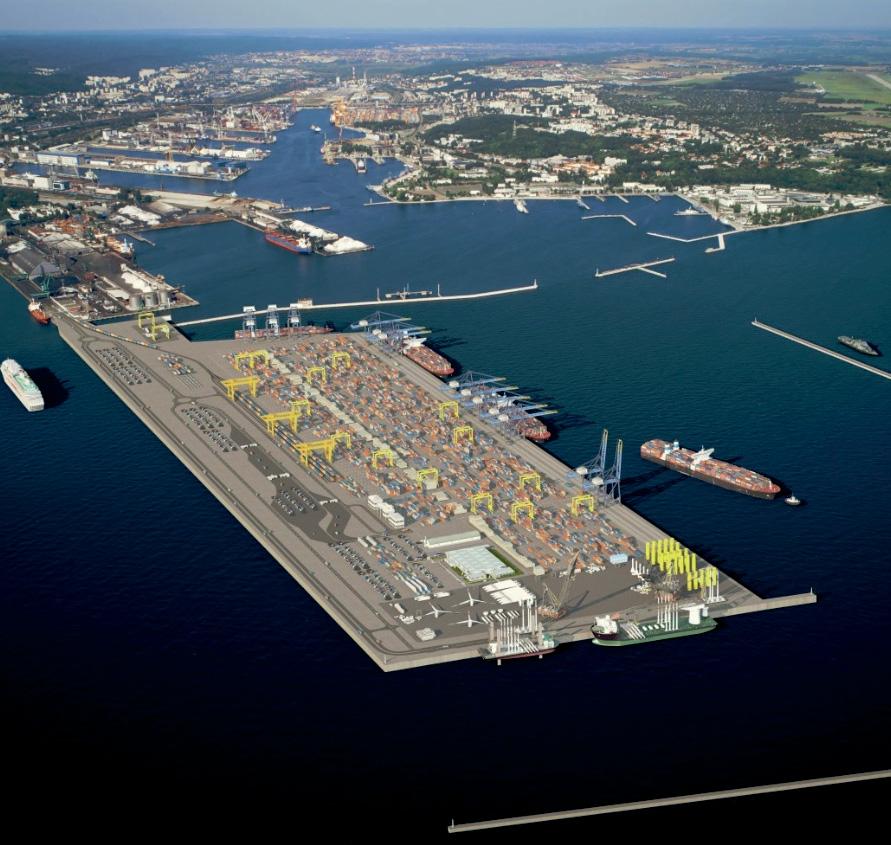
8 The Outer Port is
set to increase the port area by 151ha and the transhipment capacity by 2.5 million TEU

JUNE 2021 15 17 TO

Southampton United Kingdom
Seawork is open for business – all year


Reserve now for 2021. Make the most of marketing & PR support from Seawork and our leading commercial marine magazines, in print, online, eNews and via social media.


Europe’s leading commercial marine and workboat exhibition.
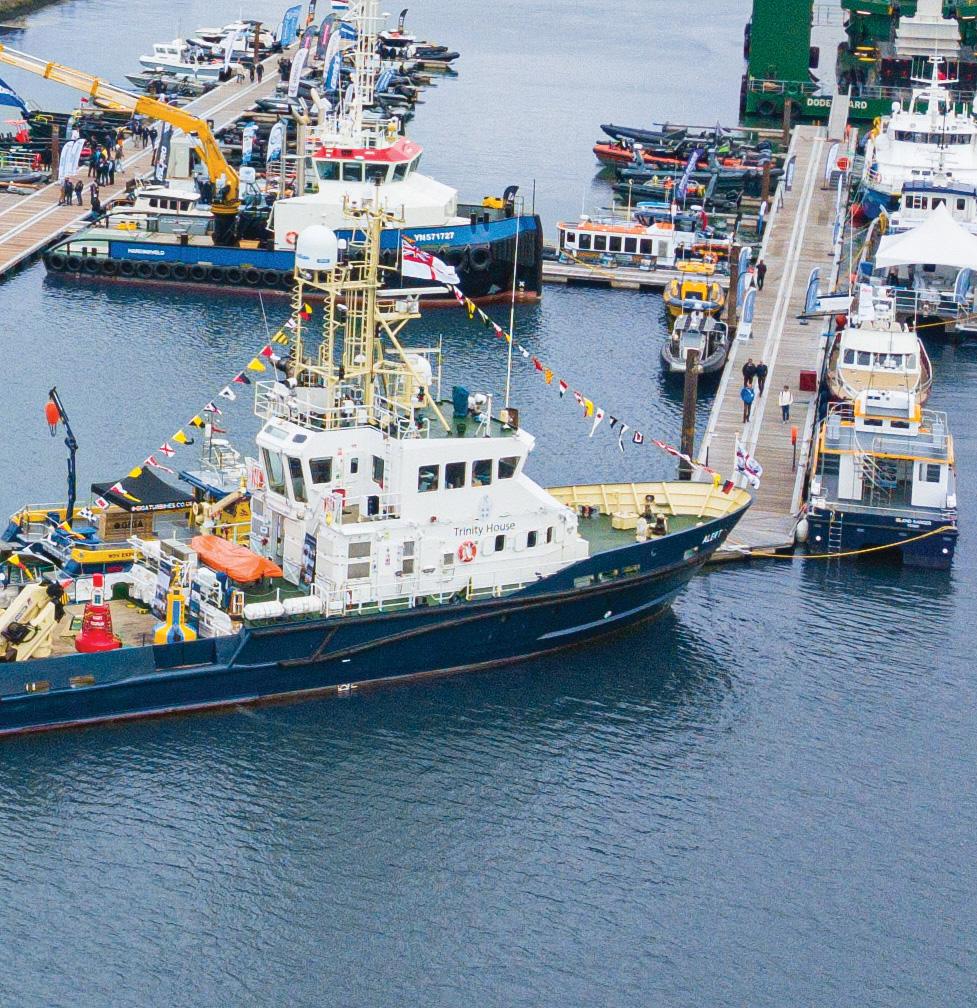
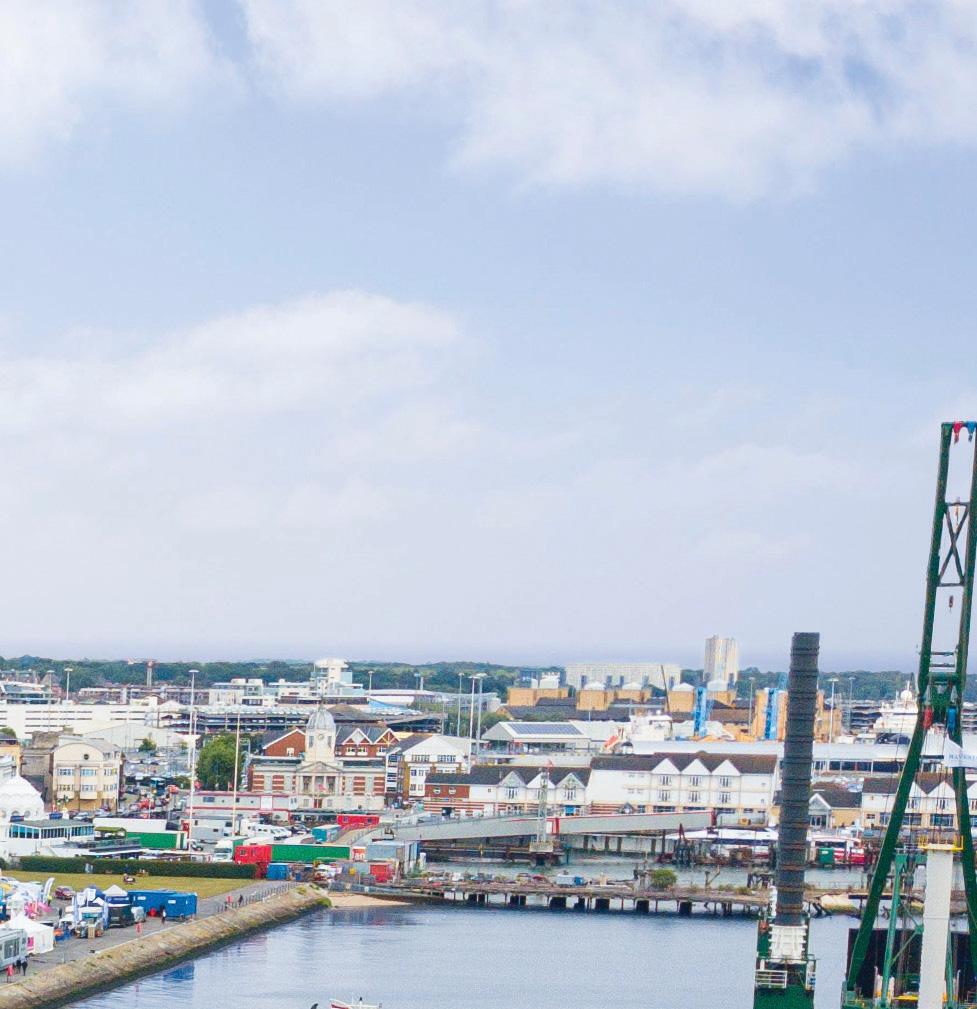

Show your latest innovations in vessels, equipment and services to over 7,700 maritime professionals. 12,000m2 of exhibition halls featuring 600 exhibitors. . E uropean Commercial Marine Awards (ECMAs) and Innovations Showcase.
Co-located with: Also returning in 2021 Speed@Seawork

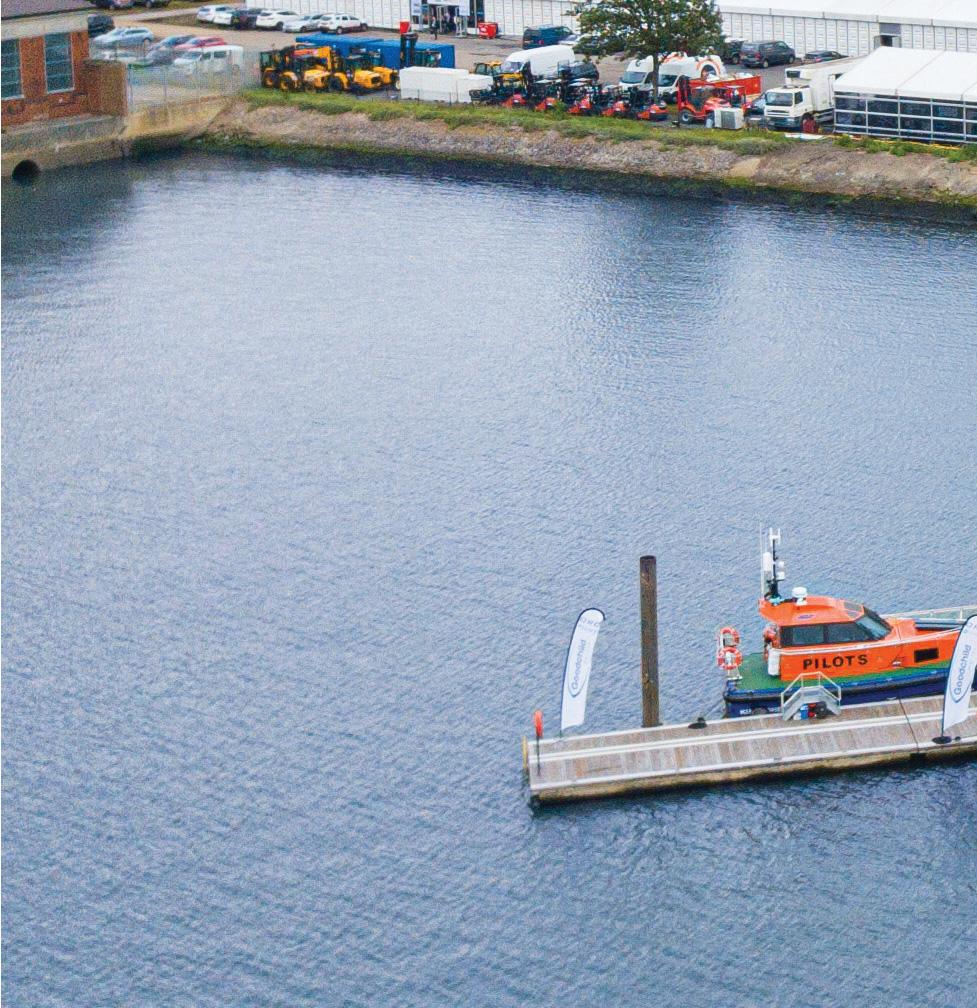

For more information visit: seawork.com contact: +44 1329 825 335 or email: info@seawork.com
Media partners:
BOATINGBUSINESS
BOATING BUSINESS & MARINE TRADE NEWS
PIONEERING BATHYMETRY DATA GATHERING BY USVs
Uncrewed Surface Vessel (USV) technology has been used to gather bathymetry data in inland waters in Canada for the fi rst time
The Canadian Hydrographic Service (CHS) contracted IIC Technologies to acquire a high-resolution seabed survey in Lake Superior, in water depths up to 200m, over 800km2 off Thunder Bay, Ontario, using USV technology. IIC partnered with XOCEAN, who provided two remotely operated XO450 USVs from XOCEAN’s Control Centres in the UK and Ireland, while IIC provided the Party Chief, shore-based data processing, and logistical support.
Dave Bazowsky, engineering project supervisor, said: “The IHO S-44 Order 1A data collected in this area will be used to update navigational publications used to facilitate safe and efficient navigation and will also contribute to the Blue Economy in general.”
SATELLITE MONITORING
The uncrewed vessels are remotely monitored and controlled 24/7 via a satellite connection by a team that can be located anywhere in the world. XOCEAN’s USVs offer significant benefits including increased safety with operators remaining onshore, survey efficiency due to multiple-day mission 24/7 operations, drastically reduced local resourcing requirements, and carbon-neutral operations which together lead to significant economic savings.
Throughout the mission, a team combining IIC Technologies Hydrographers and Data Processors and XOCEAN USV Pilots and Surveyors remotely monitored the USVs to ensure safe operation of the vessels and quality of data acquisition. The success of this project demonstrates the highly flexible and collaborative nature of this new technology, enabling industry experts to have direct access to real time data, from any location.

8 XOCEAN XO-450
Uncrewed Surface Vessel at sea
Blyth survey vessel boasts top tech
Blyth Catamarans has delivered a new 15m survey vessel with Furuno full-specifi ed radar and GPS technologies to a university in Germany.
Commissioned by the University of Rostock, Limanda features two built in survey stations and a fully-developed LAN and WLAN network technology with internet access, alongside the latest safety equipment.
“On deck equipment include a hydraulically operated 1 tonne A-frame, a deck winch, a moonpool, and an optimized hiab crane which is wirelessly operated and a stainless steel observation platform to the roof,” said Blyth Catamarans.
During its successful sea trials, Limanda achieved a top speed of 22 knots and a cruising speed of 18knots. It is powered by twin engines “MAN 500hp Tier 3”, supplied by PME Power Systems. These engines are built with technology that was designed for the use of low-sulphur fuels.
Construction of the vessel started at the beginning of 2020, with work finished in time to ship the vessel at the end of the year. Limanda is the sister ship of Keil University’s Egidora, which was built by Blyth Catamarans in 2018.
Blyth Catamarans have confirmed it is currently in the process of completing a 14m survey vessel 14m which will be launched shortly. Blyth Catamarans designs its vessels entirely inhouse. Engineering and electronics are supplied and fitted internally, and all stainless-steel fittings are custom made within the company’s own dedicated fabrication workshop.
Cloud solution for satellite seafl oor mapping
An EU co-funded research and innovation project will develop a remote solution for global satellite derived seafl oor mapping.
The three-year 4S (Satellite Seafloor Survey Suite) EOMAP-led project will develop an online cloud-based solution that will use highly automated earth observation algorithms and workflows to remotely map and monitor seafloor habitats, morphology and shallow water bathymetry.
Dr. Knut Hartmann, 4S project coordinator and COO of EOMAP, which is leading the project, said: “The aim of 4S is to achieve a seamless integration of satellite-data analytics into marine and coastal workflows. We’re combining recent advances in satellite sensors, data analytics and cloud infrastructure to benefit marine reporting, monitoring and surveying methods.” 4S will leverage artificial intelligence, physics models, and satellite and airborne data to derisk marine site characterisation activities in the shallow water zone by quickly analysing seafloor properties using less personnel and equipment.
Fugro will lead the project’s business and integration actions, and its hydrographers and Geo-data specialists will evaluate the solution via several use cases around the globe.
Dhira Adhiwijna, Fugro’s 4S project manager, said: “Fugro is honoured to be part of an exciting EU innovation that could result in faster and safer Geo-data insights for our energy and infrastructure clients. Upon completion, 4S will be integrated into our high-speed hydrography offering and provide innovative solutions that will also derisk marine site characterisation activities.”
The 4S consortium includes experts from the fields of satellite data analytics, hydrography and biology.




